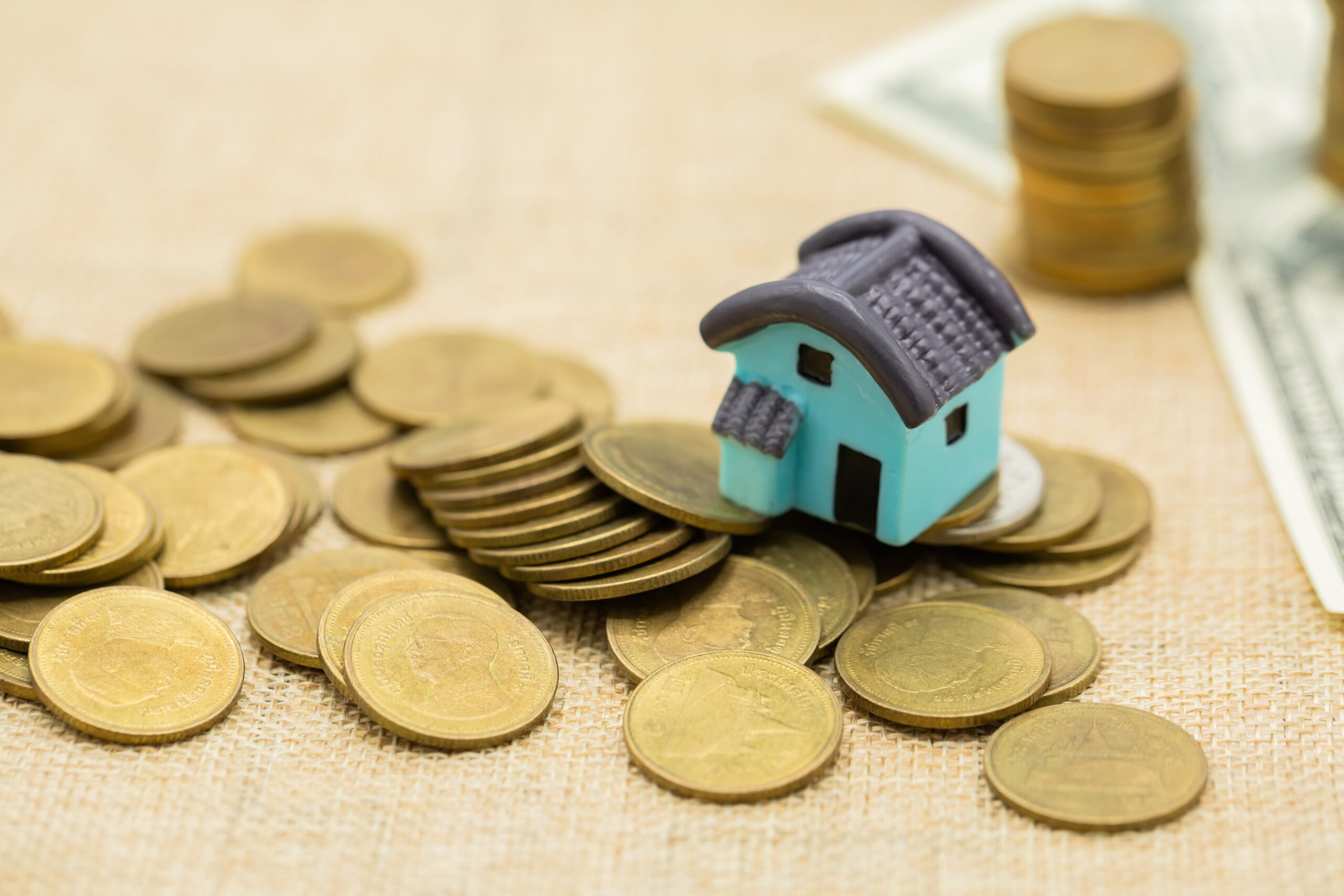Homeowners seeking alternatives to traditional mortgages often come across First Lien Home Equity Lines of Credit (HELOCs) as a potential game-changer in managing home financing.
Unlike traditional mortgages, which follow a fixed amortization schedule, first lien HELOCs operate as revolving credit lines, allowing borrowers to deposit and withdraw funds as needed. But are they truly worth it?
In this in-depth guide, we’ll break down how first lien HELOCs work, their benefits and risks, and whether they are a smart financial move for your specific situation.
Understanding First Lien HELOCs
A First Lien HELOC is a financial tool that replaces your traditional mortgage. Instead of a fixed payment structure, a first lien HELOC functions as a checking account tied to your home’s equity. This means you can deposit your income directly into the HELOC, reducing the outstanding balance and minimizing interest charges before making withdrawals for expenses.
Unlike a second lien HELOC, which acts as a secondary loan in addition to your mortgage, a first lien HELOC serves as your primary home loan. This makes it a powerful tool for homeowners who want greater financial flexibility and the ability to pay off their mortgage faster.
Want to learn how homeowners are paying off their mortgages in just 5-7 years? Watch this exclusive interview with a former mortgage lender and discover the secrets to financial freedom.
How First Lien HELOCs Work

A first lien HELOC works similarly to a checking account but is secured by your home’s equity. It allows homeowners to leverage their income more effectively by reducing interest costs and increasing financial flexibility. Here’s how it operates:
- Your Income is Deposited Directly into the HELOC – By doing this, your daily loan balance decreases, reducing the amount of interest you owe. Unlike a traditional mortgage, where your payments are applied on a monthly schedule, a HELOC benefits from daily interest calculations, meaning even short-term reductions in the balance lower your overall interest payments.
- You Pay for Expenses from the HELOC – Instead of letting extra income sit in a checking account earning little to no interest, funds stay in your HELOC and actively lower your loan balance. When you withdraw for necessary expenses, you are essentially reusing your available credit while still minimizing interest costs.
- Interest is Calculated Daily – Traditional mortgages apply interest on a monthly basis, making it difficult to reduce interest costs in real time. First lien HELOCs use a daily interest model, which means every extra dollar deposited immediately reduces your interest burden.
- Revolving Credit Structure – A first lien HELOC functions like a high-limit credit line, allowing borrowers to withdraw and repay funds as needed. Unlike a conventional mortgage where payments are fixed and principal reductions are scheduled, a HELOC gives you direct control over how quickly you pay off your loan.
- Increased Cash Flow Efficiency – Because a HELOC integrates your mortgage with your everyday banking, it eliminates idle cash sitting in checking accounts and redirects it toward reducing debt. This optimized use of cash flow leads to faster loan paydown and significant interest savings over time.
- Automatic Loan Reduction – As long as you continue depositing income into the HELOC and managing withdrawals responsibly, your loan balance is constantly being reduced. This automatic process accelerates mortgage payoff, often allowing homeowners to pay off their home in 5-7 years instead of 30.
By leveraging a first lien HELOC effectively, homeowners can maximize their income’s impact, lower interest expenses, and gain control over their financial future in a way that traditional mortgages do not allow.
Watch this exclusive interview with a former mortgage lender and discover the secrets to financial freedom.
Key Differences Between a First Lien HELOC and a Traditional Mortgage:
| Feature | First Lien HELOC | Traditional Mortgage |
|---|---|---|
| Interest Type | Variable | Fixed or Variable |
| Payment Structure | Revolving credit, interest calculated daily | Fixed monthly payments |
| Loan Access | Can withdraw and repay as needed | Locked principal balance |
| Flexibility | High | Low |
| Payoff Strategy | Can accelerate payoff with smart money management | Fixed schedule, limited prepayment options |
Benefits of a First Lien HELOC
For the right homeowner, a first lien HELOC can offer substantial financial benefits. Here are some of the most compelling advantages:
1. Faster Mortgage Payoff
By depositing income into the HELOC and keeping the balance low, borrowers can significantly reduce interest payments and accelerate their mortgage payoff timeline. Homeowners who manage their cash flow effectively can pay off their homes in as little as 5-7 years instead of the typical 30-year mortgage cycle.
2. Lower Interest Costs Over Time
With a first lien HELOC, interest is calculated daily, meaning every dollar applied to the balance immediately reduces the amount on which interest is charged. This is in stark contrast to traditional mortgages, where payments are primarily applied toward interest in the early years.
3. Financial Flexibility
Unlike traditional mortgages, which require fixed monthly payments, a first lien HELOC allows homeowners to withdraw and deposit funds as needed. This is particularly beneficial for self-employed individuals or those with irregular income streams.
4. Emergency Fund Access
Since a first lien HELOC provides ongoing access to home equity, it can serve as an emergency fund, offering financial security in case of unexpected expenses without requiring additional loans or credit card debt.
5. Potential Tax Advantages
Interest paid on HELOCs may be tax-deductible if used for home improvements. Consult a tax professional to determine eligibility for deductions.

How to Qualify for a First Lien HELOC
Qualifying for a first lien HELOC requires meeting specific lender criteria to ensure you have the financial stability and equity necessary to manage this type of loan effectively. Here are the key requirements most lenders look for:
Strong Credit Score
Most lenders require a credit score of 680 or higher, though some may set the bar at 700+ for the best interest rates. A higher credit score demonstrates responsible financial behavior and reduces the risk for lenders.
Sufficient Home Equity
Since a first lien HELOC replaces your mortgage, lenders require at least 20-30% equity in your home. The more equity you have, the more favorable your loan terms may be.
Stable Income and Low Debt-to-Income (DTI) Ratio
Lenders assess your debt-to-income ratio to determine if you can handle a revolving credit structure. A DTI below 43% is typically required, though a lower ratio (under 36%) improves your chances of approval.
Positive Payment History
A strong track record of on-time mortgage payments and responsible credit use will work in your favor when applying for a first lien HELOC.
Proof of Income and Employment Stability
Lenders require consistent income proof through tax returns, W-2 forms, or bank statements. Self-employed applicants may need to provide additional documentation to verify steady cash flow.
Property Appraisal
Most lenders will conduct an appraisal to assess your home’s market value before approving a first lien HELOC. A recent appraisal confirming your home’s equity strengthens your application.
Low Utilization of Existing Credit
If you have maxed out credit cards or multiple outstanding loans, it can hurt your approval chances. Keeping your credit utilization below 30% is a good rule of thumb for improving eligibility.
If you meet these qualifications, a first lien HELOC could be an excellent financial tool. However, if your credit score or DTI ratio needs improvement, consider addressing these areas before applying.
Ready to learn how to maximize the benefits of a first lien HELOC? Watch this exclusive interview to uncover proven mortgage strategies that can transform your financial future.
Risks and Downsides of First Lien HELOCs
Despite their advantages, first lien HELOCs are not suitable for everyone. Here are some key risks to consider:
Variable Interest Rates
Unlike fixed-rate mortgages, most HELOCs come with variable interest rates, which can rise unexpectedly and increase your monthly payments. This could make budgeting unpredictable, particularly in a rising interest rate environment.
Requires Financial Discipline
A first lien HELOC gives homeowners access to their home equity at any time, which can be tempting to misuse. If funds are not managed wisely, it can lead to ongoing debt instead of mortgage freedom.
Market Fluctuations Can Reduce Home Equity
In a housing downturn, property values may drop, reducing available equity. This could limit your ability to access funds through your HELOC and put you at greater financial risk.
Potential Fees and Closing Costs
Some lenders charge upfront fees, annual fees, or closing costs for a first lien HELOC, which can offset the potential benefits if not accounted for in your financial plan.
Want to find out if a First Lien HELOC is the right move for you? Watch this exclusive interview with a mortgage expert and learn how to maximize home financing strategies.
Who Should Consider a First Lien HELOC?
A first lien HELOC is a great fit for certain homeowners but may not work for everyone. Here’s who stands to benefit the most:
- Homeowners with Strong Financial Discipline – If you’re diligent about managing money and can avoid unnecessary withdrawals, this strategy can help you become mortgage-free quickly.
- Self-Employed Individuals – Those with fluctuating incomes can benefit from the flexibility of a first lien HELOC, allowing them to adjust payments as needed.
- Homeowners with Significant Equity – Borrowers with substantial home equity will have greater access to funds while keeping interest costs manageable.
- Investors Looking for Liquidity – Real estate investors can leverage a first lien HELOC to fund other investments while keeping mortgage costs low.
Final Verdict: Are First Lien HELOCs Worth It?
For financially savvy homeowners, a first lien HELOC can be a powerful tool for accelerating mortgage payoff, reducing interest expenses, and increasing financial flexibility. However, they require careful management, financial discipline, and a tolerance for interest rate fluctuations. If you prefer predictable payments and a traditional approach to home financing, a first lien HELOC may not be the best choice.
Before making a decision, evaluate your financial habits, risk tolerance, and long-term goals. If managed correctly, a first lien HELOC can help you achieve mortgage freedom years ahead of schedule.
Ready to learn how to maximize the benefits of a first lien HELOC? Watch this exclusive interview to uncover proven mortgage strategies that can transform your financial future.
Affiliate Disclaimer: BestMortgages.co may include affiliate links, which allow us to earn a small commission when you make a purchase through them. This helps support our site at no extra cost to you. Thank you for your support!




0 Comments